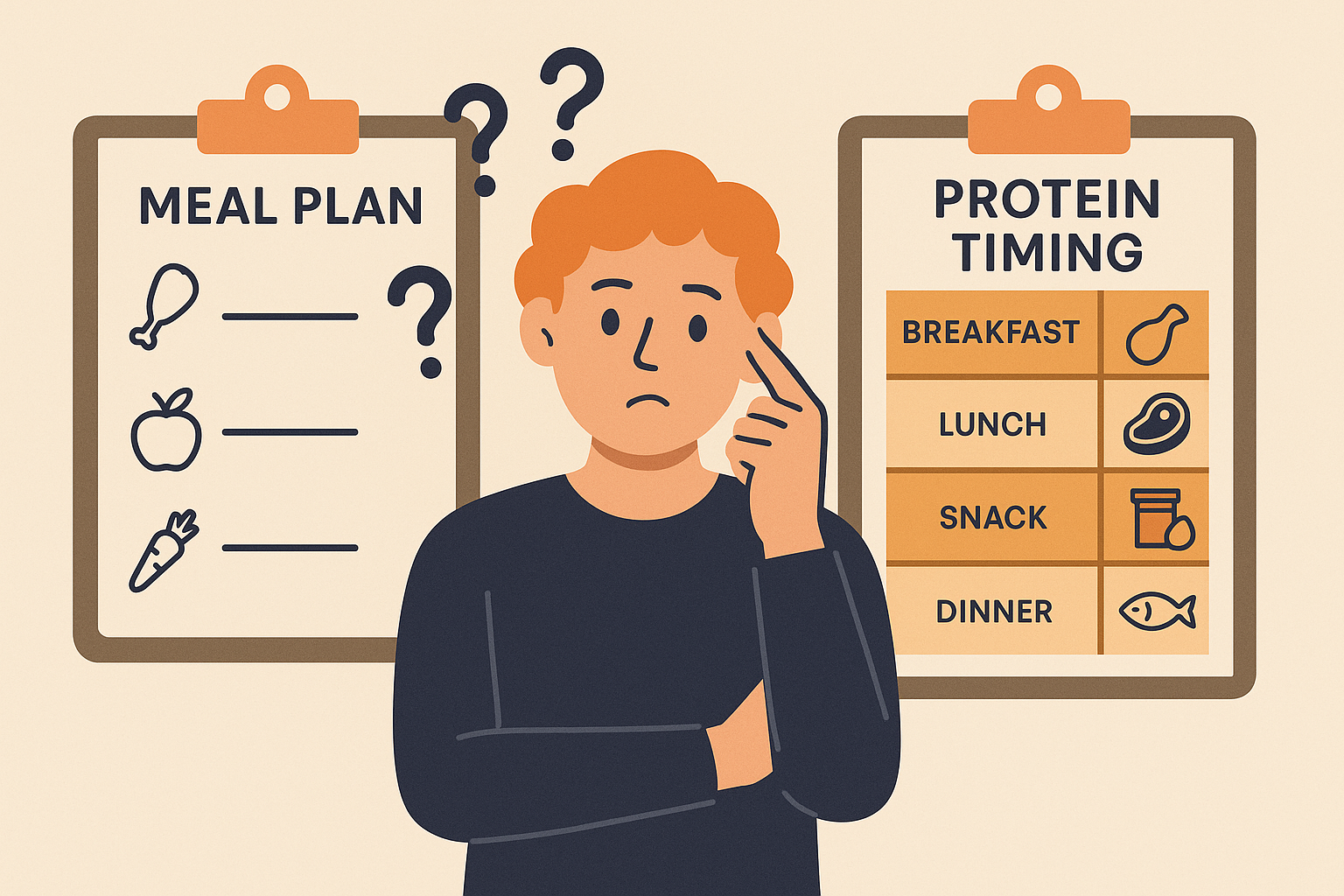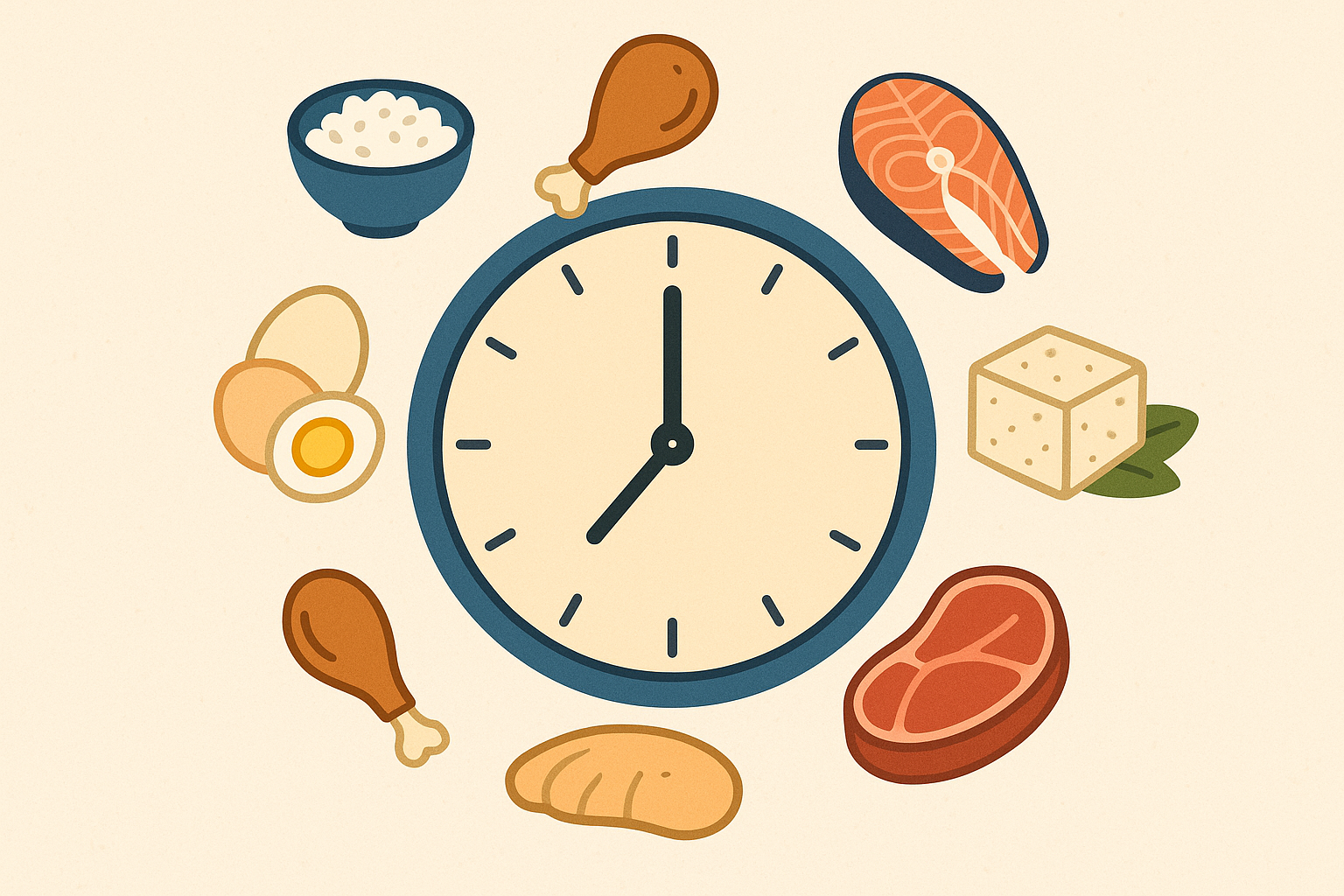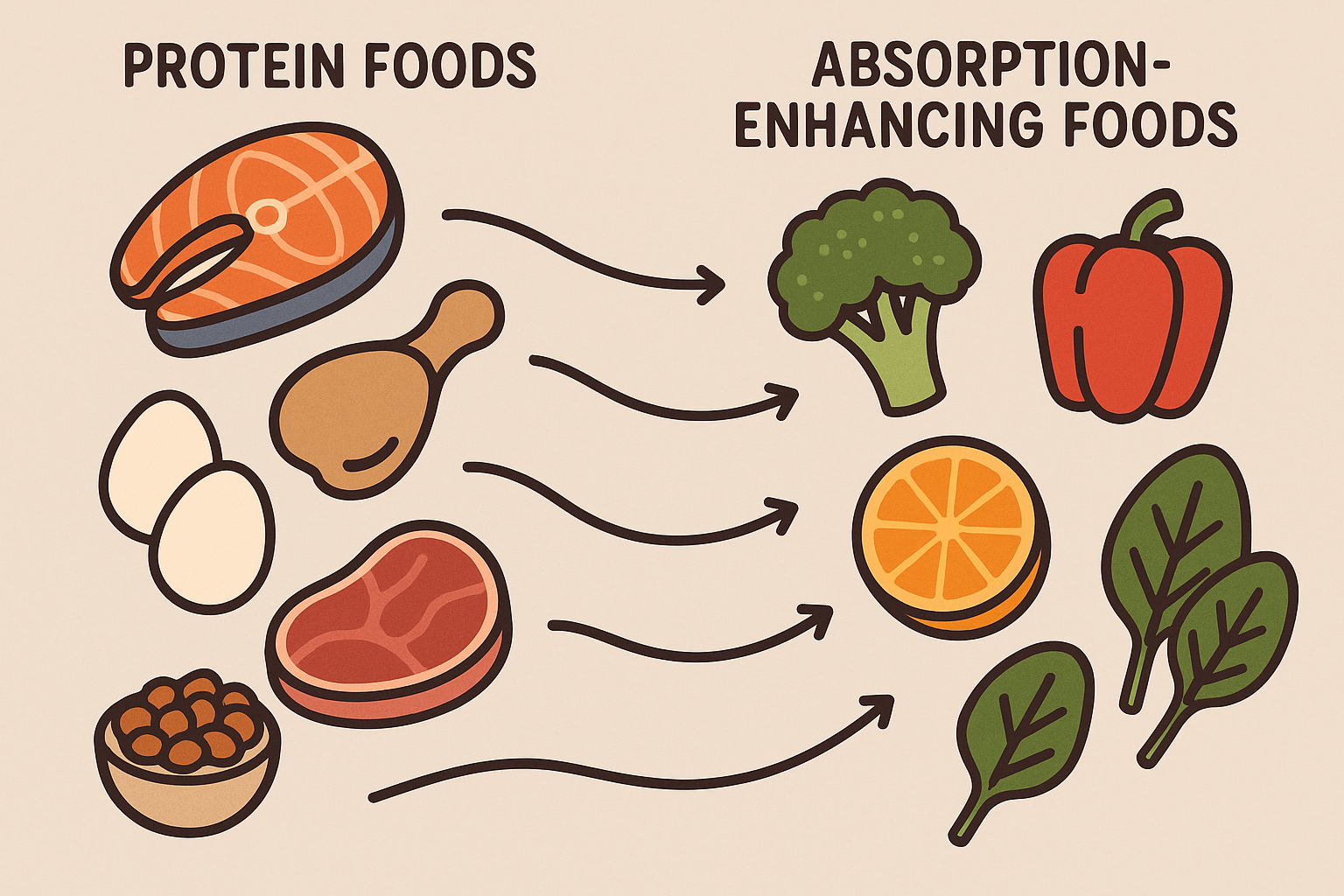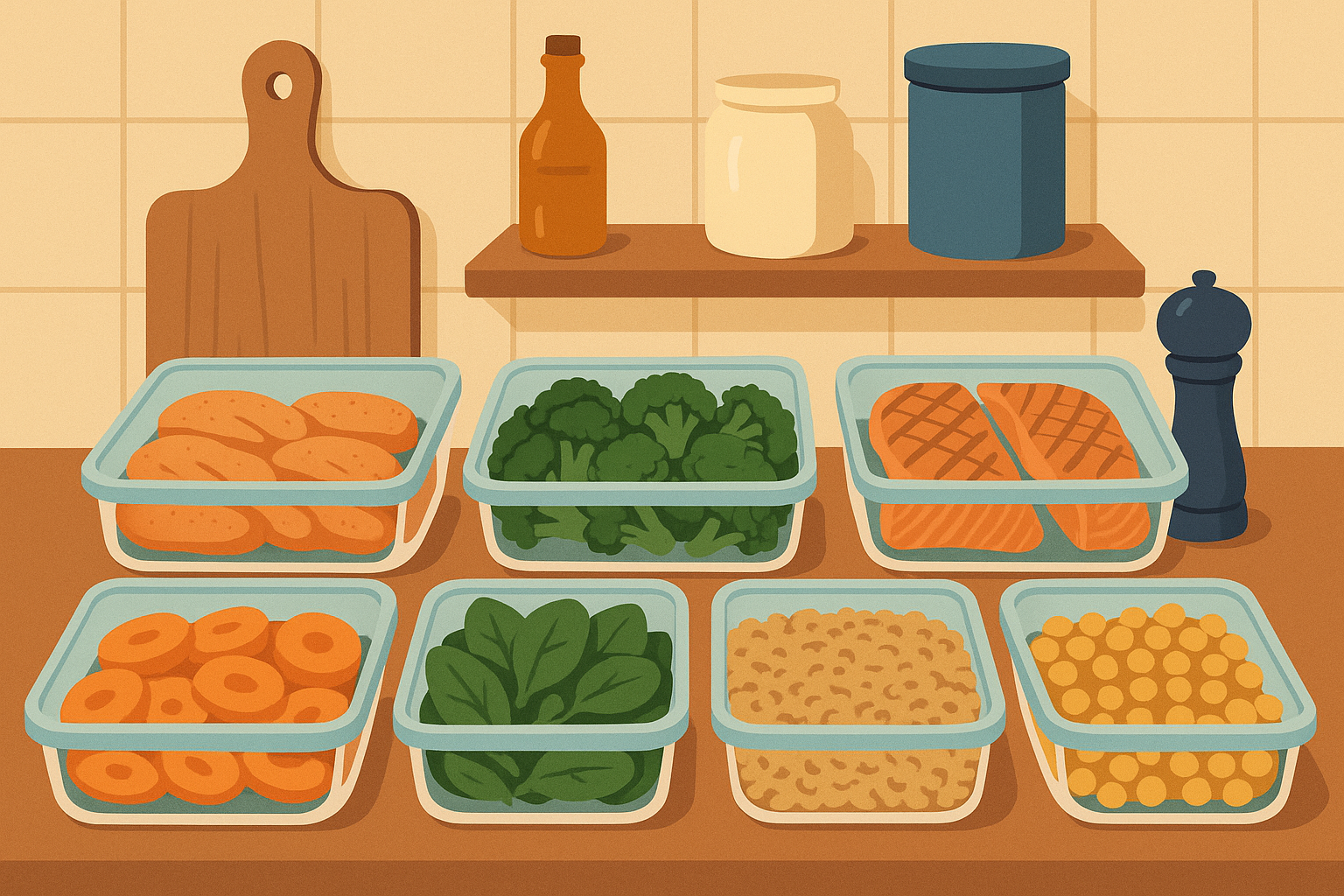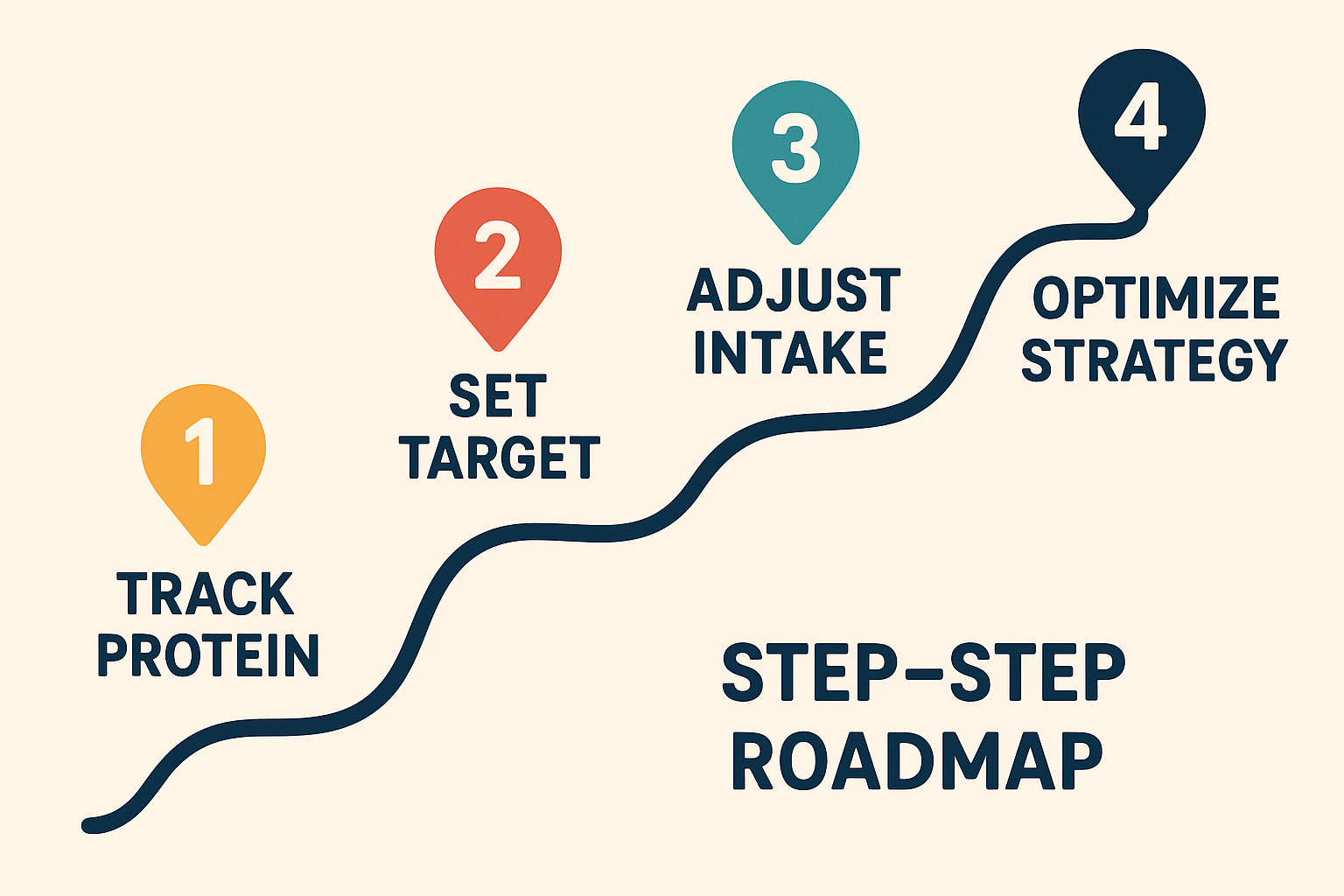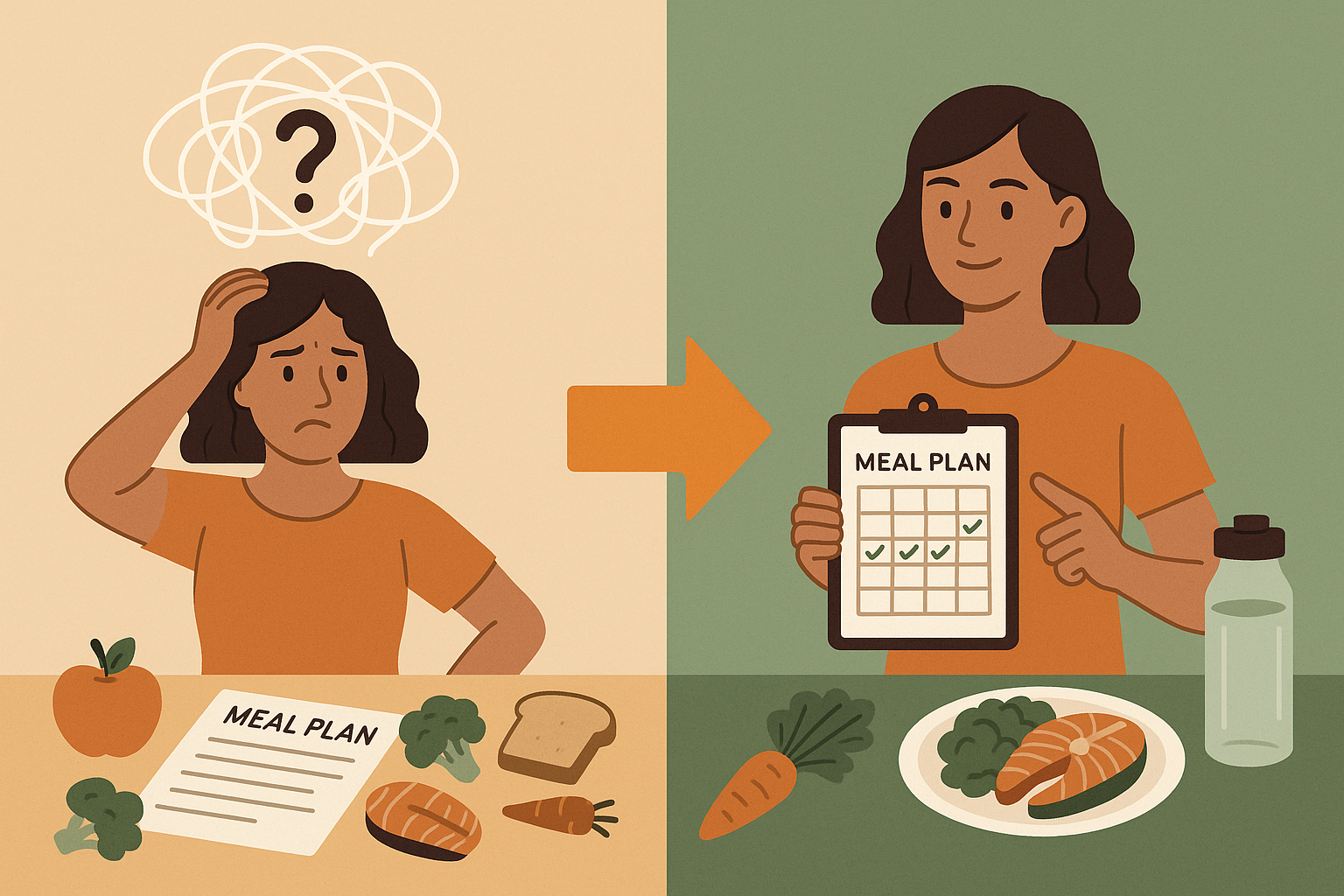1700 Calorie Meal Plan High Protein Secrets That Actually Work (Most People Get This Wrong)

Look, I used to think hitting my protein goals was just about eating more chicken and counting numbers on an app. But after struggling with the same 1700-calorie plan for months—constantly hungry, bored out of my mind, and spending way too much at the grocery store—I realized I was missing some pretty important stuff about when and how to eat that protein.
Can we be honest for a second? Most of us have tried the whole “eat more protein, lose weight” thing and felt like we were drowning in bland food and complicated rules. I’ve been there—standing in my kitchen at 9 PM, staring at another sad piece of chicken, wondering why this felt so much harder than it should.
Research shows that protein intakes ranging from 0.7 to one gram of protein per pound of body weight per day are optimal for muscle growth and recovery, but here’s what nobody tells you: most people struggle to hit these targets because they’re doing it all wrong.

Table of Contents
This isn’t another generic meal plan that’ll have you eating the same boring meals every day. We’re going to dig into the stuff that actually makes the difference between success and giving up after two weeks. Each section builds on the previous one, so by the end, you’ll have a complete system that works with your real life, not against it.
- Why Most High-Protein Plans Leave You Hungry and Frustrated
- Your Body Has a Schedule (And It’s Not What You Think)
- Smart Ways to Mix Up Your Carbs and Fats Without Going Crazy
- How to Actually Absorb the Protein You’re Eating
- The Mental Game: Why Willpower Isn’t Enough
- Making It All Work: Your Step-by-Step Game Plan
- The Real Talk Wrap-Up
TL;DR – The Game-Changing Stuff You Need to Know
If you’re in a hurry, here are the insights that completely changed how I approach high-protein eating. These aren’t just tips—they’re the difference between another failed diet and actually getting results that stick.
- Your body processes protein differently throughout the day—timing beats total amounts every time
- Most people only absorb about 60-70% of their protein because of digestive issues they don’t even know they have
- Cycling your carbs and fats around your protein keeps your metabolism from adapting (and getting bored)
- The mental side of meal planning matters more than perfect macros
- Simple food combinations can boost protein absorption by up to 30%
- Your workout type should completely change how you spread protein throughout the day
Why Most High-Protein Plans Leave You Hungry and Frustrated
Here’s the thing nobody talks about: standard high-protein meal plans focus on hitting daily totals without considering how your body actually processes protein throughout the day. I learned this the hard way after months of eating identical meals at identical times and wondering why my progress stalled.
Similar to how understanding intermittent fasting timing affects women’s hormonal balance, protein timing plays a huge role in whether your plan actually works or just makes you tired.
Your body can only handle about 25-30 grams of protein at one time. When you dump 50+ grams into your system during one meal, you’re basically paying premium prices for expensive pee. The extra gets turned into sugar or stored as fat—exactly what you’re trying to avoid when you’re only eating 1700 calories a day.
But here’s what really drove me crazy: I was eating the same protein amounts at the same times every single day. Your metabolism figures this out in about 2-3 weeks and basically goes, “Oh, this again,” and stops working as hard. I started mixing up my protein timing based on whether it was a workout day or rest day, and that’s when things finally clicked.
| What I Used to Do | Why This Sucked | What Actually Works |
|---|---|---|
| Eating 50g protein in one meal | Most of it went to waste | 25-30g per meal, spread throughout the day |
| Same protein timing every day | My body got used to it and stopped responding | Mix it up based on training days |
| Only caring about total grams | Ignored whether I was actually absorbing it | Focus on absorption tricks |
| Following generic meal plans | Didn’t match my actual life or goals | Customize based on my body weight and schedule |
The absorption thing runs way deeper than most people realize. You might be hitting your protein numbers on paper, but if your digestive system isn’t doing its job, you’re missing out on 30-40% of what you’re eating. This becomes a real problem when you’re working with only 1700 calories and every single gram needs to count.
Your Body Has a Schedule (And It’s Not What You Think)
I used to roll my eyes when people talked about protein timing. Like, great, another thing to obsess over. But then I tried it for two weeks and actually felt the difference. Your body has natural times when it’s really good at using protein and times when it basically ignores it. Once I figured out my body’s schedule, everything got easier.
Your body’s ability to use protein changes dramatically based on your natural rhythms and when you work out. There are specific windows where protein building peaks, and most people completely miss them when planning their meals. Understanding these cycles lets you get way more out of every gram of protein within your 1700 calories.
Working With Your Body’s Natural Protein Schedule
Your body creates predictable windows where protein building peaks and valleys throughout the day. By timing your protein intake with these natural cycles, you can dramatically improve how well your body uses the protein you’re eating, making your 1700-calorie plan work harder for you.
The Morning Protein Power-Up
Getting 25-30g of good protein within your first waking hour basically tells your body, “Hey, we’re building today, not breaking down.” This morning strategy makes every other protein meal work better throughout the day, giving you better results from the same calories.
Your body wakes up in breakdown mode—it’s literally using muscle tissue for energy after not eating all night. The faster you can flip this switch, the better your entire day goes. I’ve seen people completely transform their energy levels just by switching from their usual toast breakfast to something protein-heavy within 30 minutes of waking up.
Take Sarah, a 140-pound CrossFit athlete who switched from her usual oatmeal breakfast (8g protein) to three whole eggs with Greek yogurt (35g protein) within 30 minutes of waking. After 4 weeks, she noticed way better energy throughout the day and improved recovery from her evening workouts, even though she was eating the same total daily protein.
The Nighttime Recovery Window
The 3-4 hours before sleep are crucial for overnight muscle recovery, especially when you’re eating fewer calories. Your body needs a steady supply of amino acids during the longest fasting period of your day, or it starts breaking down muscle tissue for energy.
Casein protein or Greek yogurt 2-3 hours before bed gives you a slow release of amino acids throughout the night. This prevents your body from eating your own muscle while you sleep—something that becomes way more likely when you’re in a calorie deficit.
Matching Your Protein to Your Workouts
Different types of workouts create totally different protein needs that require you to shift how you spread your daily protein around. Instead of eating the same way every day, understanding how to adjust protein around your specific training gets you way better results within your 1700-calorie framework.
Post-Strength Training Recovery
After lifting weights, your protein needs spike for 24-48 hours. This isn’t just about the immediate post-workout window—it’s about optimizing protein intake for the entire recovery period while staying within your calorie target.
On strength training days, I front-load 40% of my daily protein in the first 6 hours after my workout. So if I’m targeting 140g protein daily, I’ll get about 56g during this window through strategic meal timing and maybe a protein shake.
Cardio Day Protein Strategy
Cardio workouts need different protein support focused on repairing cellular damage and replacing energy stores rather than building muscle. This means you can be more flexible with timing while focusing on different types of amino acids, giving you more room to work with your calorie budget.
After cardio sessions, your body prioritizes fixing the damage from oxidative stress and refilling energy tanks. The protein timing becomes less critical, but you want amino acids that support recovery from inflammation rather than just muscle building.
Rest Day Maintenance Mode
On non-training days, your protein needs shift toward maintenance and managing leftover inflammation from previous workouts. This gives you way more flexibility with timing while maintaining results, making meal planning much more manageable.
Rest days are perfect for meal prep experiments and trying new protein sources without worrying about precise timing windows. Your body is focused on repair and adaptation rather than immediate recovery demands.
Smart Ways to Mix Up Your Carbs and Fats Without Going Crazy
While keeping your 1700-calorie target, strategically changing your carb and fat ratios around your high protein base keeps your metabolism guessing and prevents the adaptation that kills most diets. This approach keeps your body working while ensuring you never sacrifice your protein goals.
A well-designed high-protein plan typically allocates 34 percent of calories from protein, 41 percent from carbohydrates, and 25 percent from fat, but here’s the key: these ratios should change based on your training and goals, not stay the same every day.
The magic happens when you play with the non-protein calories strategically. Your protein stays consistent at 130-140g daily (about 520-560 calories), leaving you with roughly 1140-1180 calories to split between carbs and fats. This flexibility prevents your metabolism from adapting while supporting different training needs.
Strategic Carb Cycling That Actually Works
Cycling carbs while keeping protein and total calories consistent can dramatically improve your results and prevent the metabolic slowdown that kills most diets. The trick is understanding when your body actually needs carbs versus when it can efficiently use fats for fuel.
Just as finding your carb tolerance is crucial for keto success, understanding your individual carb needs helps you time your high-protein 1700 calorie meals perfectly.
Your insulin sensitivity changes based on how well you slept, your stress levels, and whether you worked out. On days when you’re insulin sensitive (usually after good sleep and before intense training), your body can handle more carbs efficiently. On days when sensitivity is lower, shifting those calories to healthy fats keeps your energy up while promoting fat burning.
High-Carb Training Day Protocol
On intense training days, putting 40-45% of your 1700 calories toward strategic carbs while maintaining 35-40% protein creates the best conditions for performance and recovery. This higher carb approach fuels your workouts and supports recovery without going over your calorie limits.
Mike follows a high-carb approach on his three weekly strength training days, eating 180g carbs (45% of 1700 calories) mainly around his workouts. On these days, he has oatmeal before training, rice with his post-workout meal, and fruit in his evening snack. His other four days drop to 120g carbs (30%), replaced with healthy fats like avocado and nuts.
The timing of these carbs matters big time. Getting 30-40g of fast carbs 30-60 minutes before working out gives you immediate fuel without messing with fat burning during easier periods. Post-workout carbs should be paired with protein in a 2:1 or 3:1 ratio to optimize energy replenishment and muscle building.
Low-Carb Recovery Day Framework
During rest days, dropping carbs to 15-20% of total calories while increasing healthy fats to 40-45% promotes fat burning and keeps your metabolism flexible. This approach maintains your protein targets while teaching your body to efficiently switch between fuel sources.
Recovery days become opportunities to improve insulin sensitivity and promote cellular cleanup through mild ketosis. Your brain and muscles can efficiently use ketones for fuel while your digestive system gets a break from processing tons of carbs.
Intermittent Fasting Integration
Combining strategic eating windows with your high-protein 1700-calorie plan can amplify both the metabolic and practical benefits. The key is understanding how to compress your eating window while maintaining optimal protein distribution for muscle building.
Compressed Eating Window Strategies
Getting your 1700 calories within a 6-8 hour window requires careful protein distribution to maintain muscle building while maximizing the fasting benefits for insulin sensitivity and cellular repair. This approach can simplify meal planning while potentially boosting your results.
The challenge becomes fitting 130-140g of protein into fewer meals without overwhelming your digestive system. I’ve found success with a three-meal approach during the eating window: 35g protein at meal one, 45g at meal two, and 40g at meal three, with 15-20g from snacks or supplements.
How to Actually Absorb the Protein You’re Eating
The difference between eating 140g of protein and actually using 140g comes down to understanding absorption tricks, digestive optimization, and strategic food combining that most meal plans completely ignore. Your stomach acid production, enzyme activity, and gut health directly impact how much of your carefully planned protein becomes available for muscle building.
I used to think protein powder and chicken breast were automatically absorbed and used by my body. Turns out, it’s way more complicated than that. Your digestive system needs to break down protein into individual amino acids, transport them across your intestinal wall, and deliver them to muscle tissue. Each step can become a bottleneck that reduces how well your 1700 calorie meal plan actually works.
Fixing Your Protein Absorption Issues
Many people have digestive issues they don’t even know about that prevent them from absorbing the protein they’re eating. Understanding how to optimize your digestive system can effectively give you more protein value from the same calories, making your 1700-calorie plan way more effective.
Supporting your digestive health is crucial for protein absorption, similar to how simple digestive strategies can reduce bloating and improve nutrient uptake from all your meals.
Digestive Enzyme Timing and Selection
Taking specific digestive enzymes 15-20 minutes before protein-rich meals can increase absorption by 15-25%. This simple trick can dramatically improve how much protein your body actually uses from each meal, maximizing every calorie in your plan.
Protease enzymes specifically target protein breakdown, while betaine HCl supports stomach acid production—especially important if you’re over 40 and experiencing natural declines in digestive power. The timing matters because enzymes need to be ready and waiting when food hits your stomach.
Digestive Enhancement Checklist:
- ☐ Take protease enzymes 15-20 minutes before protein meals
- ☐ Include betaine HCl with meals if you’re over 40
- ☐ Add ginger or digestive bitters before eating
- ☐ Drink enough water (half your body weight in ounces)
- ☐ Avoid chugging liquids during meals
- ☐ Actually chew your protein foods (20-30 chews per bite)
Gut Health Optimization for Protein Metabolism
Certain probiotic strains specifically help with protein metabolism and amino acid absorption, making your 1700-calorie plan more effective at the cellular level. Supporting your gut microbiome isn’t just about digestive comfort—it’s about maximizing nutri ent utilization.
Your gut health plays a fundamental role in nutrient absorption, and incorporating gut-supporting beverages like drinking vinegars can enhance your protein utilization throughout the day.
Lactobacillus plantarum and Bifidobacterium longum are two strains that specifically support amino acid metabolism. These beneficial bacteria produce enzymes that help break down protein structures and reduce inflammatory responses that can mess with absorption.
Stomach Acid Support Strategies
Many people over 30 have weak stomach acid production, which dramatically reduces protein digestion efficiency. Understanding how to support healthy acid levels through strategic supplementation or food-based methods can unlock better protein utilization from your existing meal plan.
Apple cider vinegar consumed 10-15 minutes before meals can naturally boost acid production. Start with one tablespoon in 4 ounces of water and adjust based on how you feel. Some people need more aggressive support through betaine HCl supplementation, especially if they experience bloating or see undigested food particles after protein-rich meals.
Strategic Food Combining for Maximum Absorption
Certain nutrient combinations can either help or hurt protein absorption, making the difference between an effective meal plan and an expensive waste of high-quality ingredients. Understanding these interactions lets you structure meals that maximize what you actually get from your food.
Absorption-Enhancing Combinations
Pairing complete proteins with specific vitamins, minerals, and plant compounds can increase how much you absorb by up to 30%. These strategic combinations ensure you’re getting maximum value from every protein source in your 1700-calorie plan.
| Protein Source | Absorption Booster | Why It Works | How to Use It |
|---|---|---|---|
| Lean meats | Vitamin C (bell peppers, citrus) | Increases iron absorption | Add peppers to chicken stir-fry |
| Plant proteins | Vitamin B12 supplement | Supports amino acid metabolism | Take with morning protein shake |
| Dairy proteins | Probiotics | Improves lactose digestion | Greek yogurt with live cultures |
| Eggs | Healthy fats (avocado) | Enhances fat-soluble vitamins | Eggs with avocado toast |
Zinc plays a huge role in protein synthesis, but many high-protein foods actually block zinc absorption. Adding pumpkin seeds or a small zinc supplement with your biggest protein meal can prevent this deficiency from developing over time.
The Mental Game: Why Willpower Isn’t Enough
Here’s what nobody talks about: the real challenge of high-protein 1700-calorie plans isn’t the nutrition science—it’s the mental and social stuff that determines whether you’ll actually stick with it long-term. Understanding these psychological aspects requires a completely different approach than traditional meal planning, but it’s what separates temporary results from lasting change.
I’ve watched countless people nail their macros for 2-3 weeks, then completely abandon their plan after one social event or stressful day. The nutrition knowledge was there, but the mental framework wasn’t. Your brain is wired to seek variety, comfort, and social connection through food. Fighting these tendencies with willpower alone is a losing battle when you’re eating 1700 calories a day.
Navigating Social Situations Without Sabotaging Progress
Successfully maintaining your nutrition goals while dealing with social situations, family dynamics, and cultural food traditions requires specific strategies that preserve both relationships and results. This isn’t about becoming antisocial—it’s about developing approaches that work in the real world.
Restaurant Survival Strategies
Developing a systematic approach to dining out while maintaining your protein and calorie targets requires menu navigation skills, modification strategies, and portion control methods that don’t make you “that person” at the table. These techniques let you maintain your social life while staying on track.
Restaurant Navigation Template:
- Pre-visit research: Check menu online, identify 2-3 suitable options
- Protein-first ordering: Choose your protein source, then build around it
- Strategic modifications: Ask for grilled instead of fried, sauce on the side
- Portion awareness: Request a to-go box immediately, save half for later
- Social focus: Engage in conversation to slow eating pace naturally
Most restaurant protein portions are 6-8 ounces, which translates to 40-55g of protein—perfect for your meal targets. The challenge comes from hidden calories in cooking oils, sauces, and preparation methods that can easily double your intended calorie intake.
Making Meal Prep Actually Sustainable
The mental and emotional aspects of food preparation determine whether your meal prep becomes a sustainable lifestyle practice or a source of stress that you eventually abandon. Understanding the psychology behind successful meal prep can make the difference between short-term compliance and long-term success.
Just as mastering simple cooking techniques like perfect oatmeal builds confidence in the kitchen, developing streamlined meal prep systems creates sustainable habits that support your high-protein goals.
Batch Cooking Systems That Actually Work
Creating streamlined preparation methods that minimize time investment while maximizing variety and nutritional quality prevents the monotony that kills most meal plans. These systems focus on efficiency without sacrificing the enjoyment of eating.
Lisa’s “Power Hour” system involves spending 60 minutes every Sunday preparing protein bases: she bakes 2 pounds of chicken thighs, hard-boils a dozen eggs, and cooks a batch of ground turkey. Throughout the week, she combines these with different vegetables and seasonings, creating varied meals without additional cooking time.
The key insight here is preparing components rather than complete meals. This approach provides flexibility while maintaining the efficiency benefits of batch cooking. You can create completely different flavor profiles using the same protein base.
Storage and Reheating for Maximum Quality
Proper food storage and reheating techniques maintain both nutritional value and taste, which is crucial for long-term adherence to pre-planned meals. Nobody sticks to a plan that produces sad, soggy food—these methods ensure your meals taste as good on day five as they did on day one.
Glass containers prevent flavor transfer and allow for even reheating. Adding a small amount of water or broth before reheating prevents protein from becoming dry and unappetizing. Vegetables should be slightly undercooked during prep since they’ll continue cooking during reheating.
Building Flexibility Into Your System
Creating systematic flexibility in your meal plan allows for life’s unpredictability while maintaining your nutritional targets and avoiding the all-or-nothing mentality that derails most people. This approach acknowledges that perfection isn’t the goal—consistency is.
Emergency Protocol Development
Creating backup plans for travel, illness, schedule disruptions, and other life events that typically destroy meal plan consistency ensures you’re never completely derailed by unexpected circumstances. These protocols provide structure during chaos while maintaining your progress.
Emergency Meal Protocol Checklist:
- ☐ Identify 5 high-protein convenience foods available everywhere
- ☐ Create a “travel day” meal template that fits any schedule
- ☐ Establish minimum effective dose: 2 protein servings + multivitamin
- ☐ Build a “reset day” protocol for getting back on track
- ☐ Designate emergency contacts who support your goals
Your emergency foods should require minimal preparation and be available at most grocery stores or convenience stores. Greek yogurt, protein bars, rotisserie chicken, and hard-boiled eggs form a solid foundation that can keep you on track during disruptions.
Making It All Work: Your Step-by-Step Game Plan
Look, I know this might sound like a lot, but remember—you don’t have to be perfect. You just have to be consistent. Moving from understanding these concepts to actually implementing them requires a systematic approach that builds habits gradually rather than overwhelming yourself with too many changes at once.
Studies show that a well-structured 1700-calorie high-protein plan averages 130g protein, 74g fat, and 136g carbs daily, but successful implementation depends more on systematic habit formation than perfect macro tracking.
The biggest mistake I see people make is trying to change everything at once. I tried to do this myself and lasted about four days before I was back to eating cereal for dinner. Your brain can only handle so many new behaviors before it gives up and reverts to old patterns. This phased approach builds momentum while preventing overwhelm.
Implementation Roadmap:
- Calculate your personal protein timing windows based on your sleep schedule and training times
- Assess your current digestive capacity through a 7-day protein absorption tracking protocol
- Design your weekly macronutrient cycling pattern around your training and lifestyle schedule
- Develop your meal prep and storage systems before starting the nutrition plan
- Create your social situation navigation strategies and practice them in low-stakes environments
- Establish your emergency protocols and backup meal options
Week 1-2: Foundation Phase
- Focus only on hitting protein targets (don’t worry about carb/fat cycling yet)
- Implement morning protein power-up strategy
- Begin digestive optimization protocols
Week 3-4: Integration Phase
- Add training-specific protein distribution
- Introduce basic carb cycling on training vs. rest days
- Practice one new meal prep technique weekly
Week 5-8: Optimization Phase
- Fine-tune absorption enhancers based on energy levels
- Implement full macronutrient cycling system
- Master social situation navigation strategies
Supporting your digestive health becomes even more crucial when you’re maximizing protein intake on a restricted calorie budget. Organic Authority’s carefully curated selection of digestive enzymes and gut health supplements can help ensure you’re actually absorbing and utilizing the protein you’re working so hard to plan and prepare. Their rigorous testing standards mean you’re getting supplements that actually work, not just marketing promises.
For those looking to enhance their meal prep with gut-supporting ingredients, incorporating homemade elderberry syrup can provide immune support while adding natural sweetness to your high-protein smoothies and overnight oats.
Track your energy levels, recovery, and hunger patterns during each phase. These markers tell you way more about whether your 1700 calorie meal plan is working than the scale ever will. Adjust timing and ratios based on how you feel, not just what the numbers say.
The Real Talk Wrap-Up
Here’s the truth: I spent years thinking that successful high-protein meal planning was just about hitting numbers and eating clean foods. What I’ve discovered is that the real game-changers happen when you understand timing, absorption, psychology, and how to keep your metabolism flexible.
Your 1700-calorie high-protein plan isn’t just about restriction—it’s about optimization. When you understand how your body actually processes protein throughout different windows, how to enhance absorption, and how to build psychological sustainability, those 1700 calories become incredibly powerful.
The difference between people who succeed long-term and those who yo-yo isn’t willpower or genetics. It’s understanding these deeper mechanisms and building systems that work with your biology and psychology rather than against them. Start with one area that resonates most with your current challenges, master it, then gradually integrate the other strategies.
Remember, this isn’t about perfection—it’s about creating a sustainable approach that delivers real results while fitting into your actual life. Progress isn’t perfection, and if I can figure this out (trust me, I’m not the most organized person), so can you. Your future self will thank you for taking the time to understand these principles rather than jumping into another generic meal plan that ignores how your body actually works.

